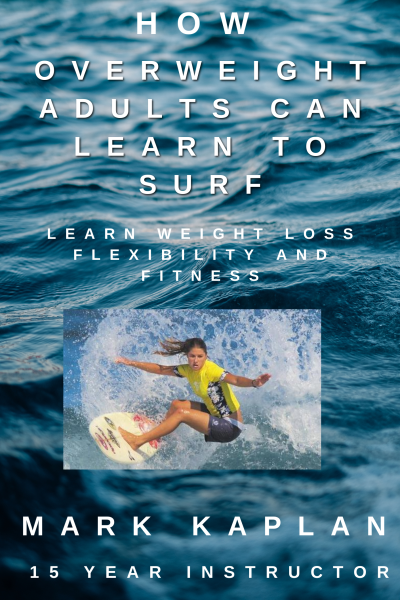Overweight People Get Fit to Surf Guide

Overweight People Get Fit to Surf: Your Guide to
Preparing for the Waves
If you’re an overweight individual dreaming of surfing
the waves but unsure where to start with your fitness, you’ve come to the right
place.
Getting fit for surfing involves a holistic approach,
focusing on losing weight, improving flexibility, building strength, and
enhancing stamina. Here’s a comprehensive guide to help you prepare your body
for the demands of surfing.
Start with Weight Loss
Losing weight is a significant first step in your journey
to becoming a surfer. Reducing body weight can help improve your agility,
making it easier to balance on the surfboard and perform surfing maneuvers.
Practical Tip: Begin by adjusting your diet to reduce
calorie intake while still providing enough energy for your workouts.
Incorporate plenty of fruits, vegetables, lean proteins, and whole grains.
Pairing a healthy diet with regular exercise is the most effective way to lose
weight sustainably.
Incorporate Stretching into Your Routine
Flexibility is crucial for surfers. It allows for greater
mobility on the board, helps prevent injuries, and makes it easier to perform
the pop-up from your board.
Practical Exercises:
Hamstring stretches: Sit on the ground and reach for your
toes.
Hip openers: Perform lunges and hold them to stretch the
hip flexors.
Shoulder stretches: Use a towel or a band to gently pull
your arms behind your back to stretch the shoulders and chest.
Build Strength for Surfing
Strength building is essential not just for paddling and
handling your surfboard, but also for maintaining control in the water.
Practical Exercises:
Push-ups: Start with modified push-ups on your knees if
necessary, and progress to standard push-ups.
Squats: These build leg and core strength, crucial for
stability when standing on your surfboard.
Planks: Hold a plank position to strengthen your core,
which is vital for balance and stability in surfing.
Improve Stamina with Aerobic Exercises
Stamina is necessary for the endurance required during
long surf sessions. Aerobic exercise will help you surf longer and more
effectively, with less fatigue.
Practical Exercises:
Swimming: Great for building endurance and mimicking the
paddling motion used in surfing.
Cycling: An excellent low-impact option to boost
cardiovascular health.
Brisk walking or jogging: Start with short distances and
gradually increase as your fitness improves.
Combine Activities for Optimal Results
For the best outcomes, combine these activities into a
weekly routine, alternating focus between flexibility, strength, and aerobic
exercises. Here’s a simple weekly plan:
Monday: Strength training (focus on upper body)
Tuesday: Aerobic exercise (swimming or cycling)
Wednesday: Rest or gentle yoga for flexibility
Thursday: Strength training (focus on lower body)
Friday: Aerobic exercise (walking or jogging)
Saturday: Stretching and flexibility exercises
Sunday: Rest or light activity like a leisurely walk
Remember, the key to success in any fitness program,
especially when preparing to surf, is consistency. Stay committed, keep pushing
yourself gradually, and you’ll not only get fit for surfing but also enjoy a
healthier lifestyle.
Join us at Oceanside Surf Lessons, where we support every
step of your fitness and surfing journey. Let’s hit the beach and make those
surfing dreams a reality!
If you are interested in Oceanside surf lessons see the Home Page
Get the Overweight Adults Can Surf Book on Amazon $7.95
Visit my page on Surf Books
#surflessonsinoceanside, #overweightpeoplecansurf, #learntosurf, #getfittosurf